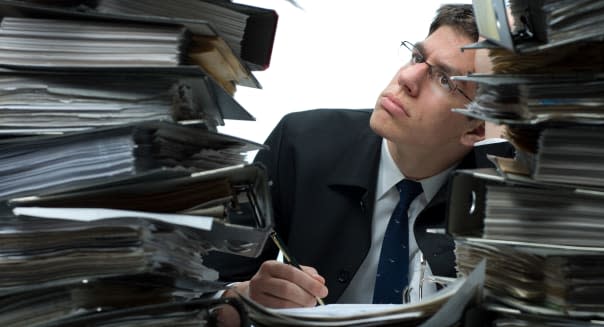What's Your Labor Worth? For Most of Us, Less Than It Was in 2000

Historically, Labor Day is a day for celebrating America's workers -- a factor that influenced everything from its founding to the date on which it was placed. Coming roughly midway between Independence Day and Thanksgiving, it was intended to give workers a respite to break up the long holiday-free stretch in the latter half of the year.
(Of course, since Labor Day is a national holiday, the makes the first Monday in September a prime date for merchants hoping to attract customers -- a factor that doesn't work out all that well for the estimated 11 percent of American workers employed in retail sales.)
So, as we honor America's workers, we're taking a peek at some of the factors, good and bad, affecting American labor.
First the good news: Unemployment is currently at 7.4 percent, almost 10 percent lower than it was last August (8.1 percent) and 22 percent lower than it was three years ago (when the rate was 9.5 percent). In fact, unemployment is currently the lowest that it's been since December 2008, almost at the beginning of the Great Recession.
And that's not all. Underemployment -- the percentage of people who are unemployed, the jobless who have quit looking, those who are temping, and those working part-time when they'd rather have full-time jobs -- has dropped to 14.3 percent, almost a 15 percent decrease from its 2010 high. In fact, the underemployment measure is at the lowest level since 2009.
But as we all know, it's not all upbeat news: While the unemployment and underemployment numbers have been sliding, the number of households living at or below the poverty line has been growing. Since 2007, it has increased by 20 percent. Currently, in fact, 15 percent of Americans are at or below the poverty threshold, and almost one in five fall below 125 percent of the poverty line.
At first glance, these two trends would seem contradictory. With unemployment and underemployment both falling, you'd expect the number of impoverished people would fall too. To add to the apparent paradox, U.S. GDP has also been growing: Since hitting its recession low in 2009, it has increased by over $1 trillion.
So why are there so many more poor Americans?
To a great extent, the answer lies in the types of jobs that Americans are getting and the degree to which they're competing for them. From 2000 to 2007, wages for the average worker increased by just 2.6 percent (adjusted for inflation), despite the fact that the average worker's productivity went up by 16 percent.
Sponsored Links
Then, in 2007, the Great Recession ripped the bottom out of the job market; in the ensuing years, when laid-off Americans returned to the work force, they often did so for significantly less pay, although they were still tasked with producing on the same level they'd achieved before. The upshot is that, today, the bottom 60 percent of workers -- basically, any households making under $65,000 -- are working for less than they made in 2000.
The solution if well-known -- if still a bit controversial. The minimum wage, which is currently about $3 per hour lower (in inflation-adjusted dollars) than it was 45 years ago, needs to be boosted. Raising it to a living wage -- about $10.50 in most areas -- would reduce dependency on social welfare programs, pour money into the economy, and spur retail activity. Perhaps most importantly, it would give America's laborers something to really celebrate.
Bruce Watson is DailyFinance's Savings Editor. You can reach him by e-mail at bruce.watson@teamaol.com, or follow him on Twitter at @bruce1971.

